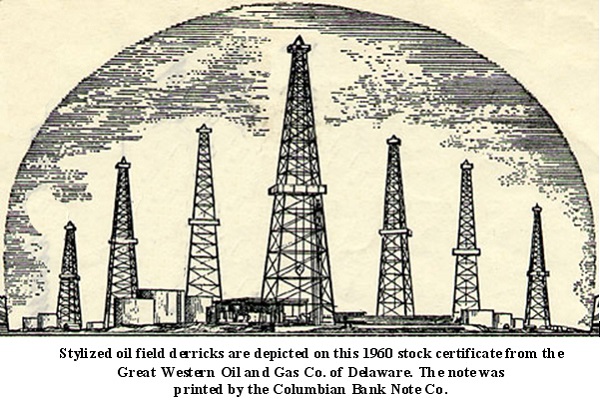
Great Western Oil & Gas Company was solvent in 1959 with owners listed as James C. Meade (later of Meade Energy), Firth C. Owens, and R.P. Ross.
The company held geologically “promising” leases at that time, but heavy expenditures in the unsuccessful development of these leases led to financial difficulties beginning in 1961.
By February 1962, Great Western properties were worth only $60,000 and the bankruptcy presumably followed in 1964. A number of similarly named but unrelated oil companies have come and gone over many years – beginning as early as the 1860s.
A long defunct namesake was established in 1864 as the Great Western Oil Company. That company’s zenith was a 1902 gusher, discovered at a depth of 683 feet, which opened the Sour Lake oilfield 20 miles northwest of Beaumont, Texas.
Originally known as Sour Lake Springs because of its sulfurous spring water popular for its healing properties, a series of oil discoveries brought wealth and new oil companies to Hardin County in southeastern Texas.
As the science of petroleum geology evolved, some experts predicted oil was trapped at Sour Lake similar to Beaumont’s Spindletop field, which produced from a salt dome.
A series of major oil discoveries at Sour Lake, Texas, near the world-famous oil gusher of 1901 at Spindletop Hill, will help turn the Texas Company into Texaco.
___________________________________________________________________________________
The stories of exploration and production companies joining petroleum booms (and avoiding busts) can be found updated in Is my Old Oil Stock worth Anything? The American Oil & Gas Historical Society preserves U.S. petroleum history. Please support this AOGHS.ORG energy education website. For membership information, contact bawells@aoghs.org. © 2018 Bruce A. Wells.

